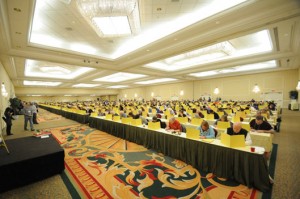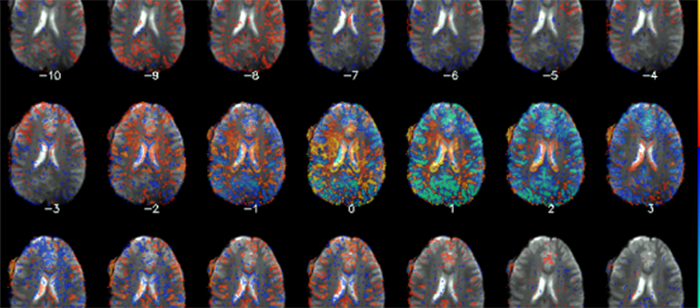 Puzzle Perfect
Puzzle Perfect
What do crosswords and Computer Science have in common? For starters there’s CSEE professor Marie desJardins. When she’s not furthering the field of Artificial Intelligence, Dr. desJardins has a crossword puzzle in hand. It’s no accident that she’s the top ranking female crossword solver in the Mid-Atlantic.
This March Dr. desJardins joined hundreds of puzzle pros at the 36th annual American Crossword Puzzle Tournament. Directed by New York Times crossword editor Will Shortz, it’s the nation’s oldest and largest competition of its kind. Hundreds of competitors spend two days solving seven puzzles. It’s a race against the clock to prove their mental mettle.
“It’s a very unforgiving sport,” she says. “It’s like gymnastics. One little foot slipping off the balance beam and you’re not going to be on that podium.”
You need both speed and accuracy to succeed. Dr. desJardins can breeze through smaller puzzles in fifteen minutes; forty-five for the larger, Sunday-New-York-Times-sized puzzles. Though speed isn’t as important as accuracy in these competitions. One mistake can hurt as much as seven minutes of stalling.
This year Dr. desJardins handed in seven perfect puzzles. That means getting every single word right—even those baffling clues pointing at pop-culture references or words all but erased from the English language. She placed 24th out of 570 solvers, finishing 5th in the “B” division.
Years ago Dr. desJardins discovered the tournament from the documentary Wordplay, which follows the personal and competitive lives of a band of crossword enthusiasts. One year she realized that the competition was during UMBC’s Spring Break. So she signed up and hit the road for Connecticut.
 “I wasn’t at all expecting to do well,” she says. It was a pleasant surprise when she placed in the top quarter of competitors. The success got her hooked. Since then, she’s been engaged in a personal battle to beat her own time. She has competed five times, and each year, her speed increases.
“I wasn’t at all expecting to do well,” she says. It was a pleasant surprise when she placed in the top quarter of competitors. The success got her hooked. Since then, she’s been engaged in a personal battle to beat her own time. She has competed five times, and each year, her speed increases.
Her secret to success? Practice is part of it. Dr.desJardins completes a lot of puzzles. She does them on Sunday morning with a cup of coffee. She does them to relax before bed. She’s adopted a policy of leaving no puzzle unfinished. Keeping a positive mindset is half the battle, she says.
Being a Computer Scientist may have something to do with it as well. Both require a knack for pattern recognition and problem solving. “It’s just the way my brain is wired,” she says.
Had Dr. desJardins solved a mere two minutes quicker this year, she would have qualified for the finals in her division. Being a finalist would mean solving an oversized puzzle on a whiteboard against two fellow division “B” finalists. It’s a daunting and high-pressure test made tougher by the gaze of six hundred spectators. It’s no surprise that this is Dr. desJardins’ goal when she competes again next year.
Photos: Top Right, courtesy UMBC Magazine Left, courtesty crosswordtournament.com









